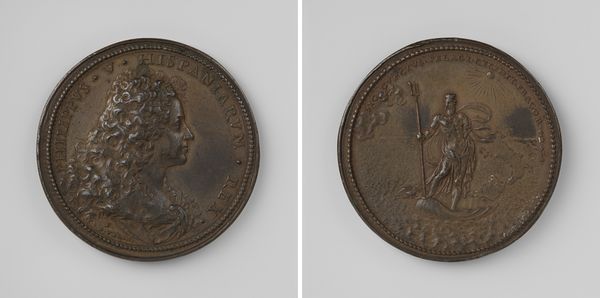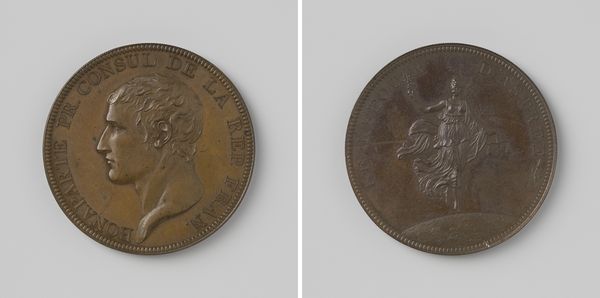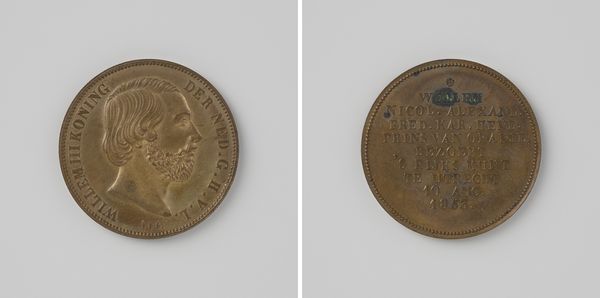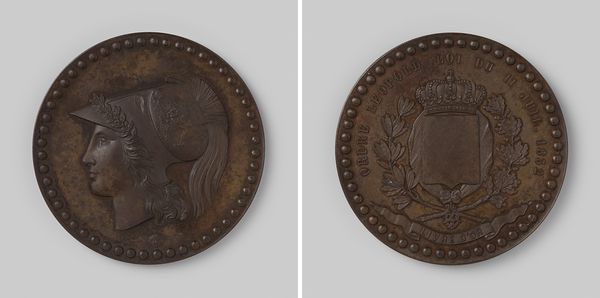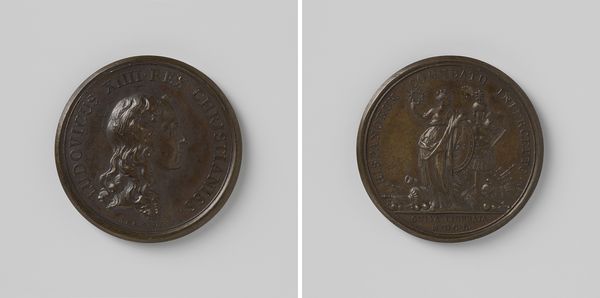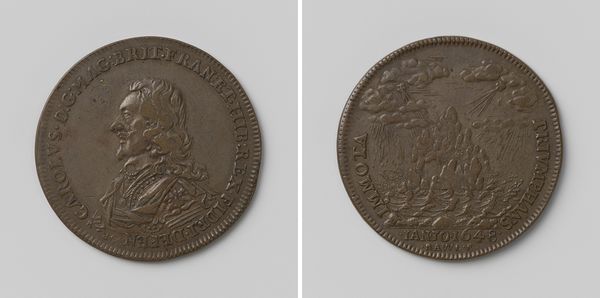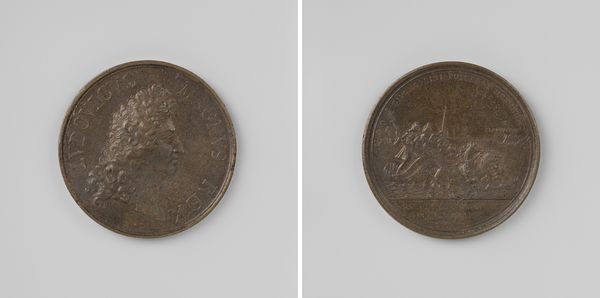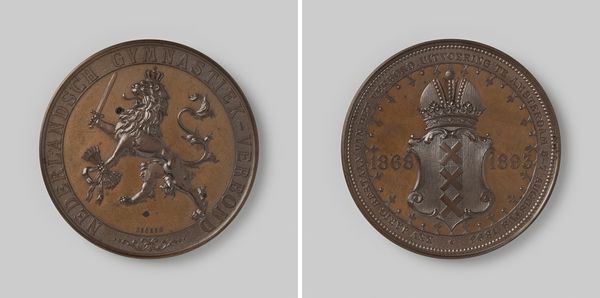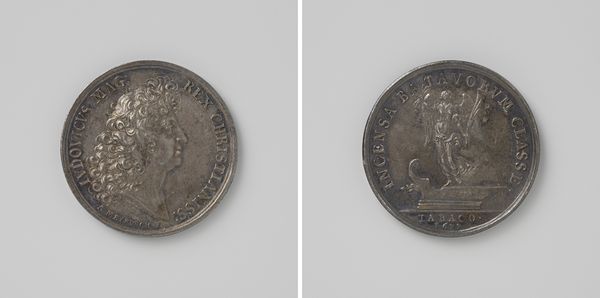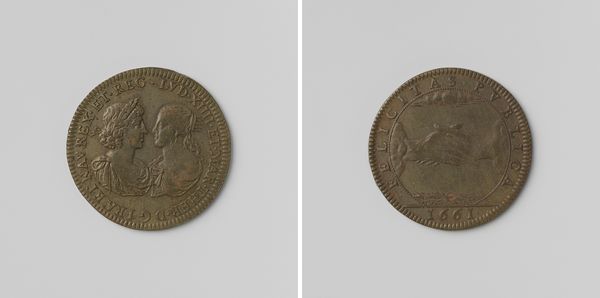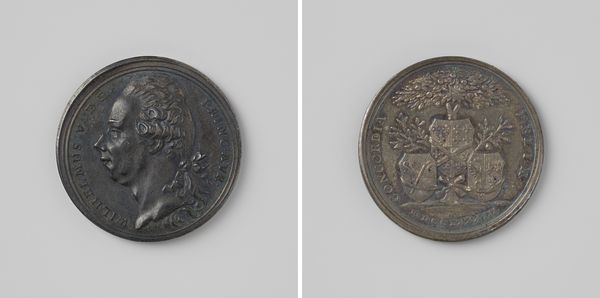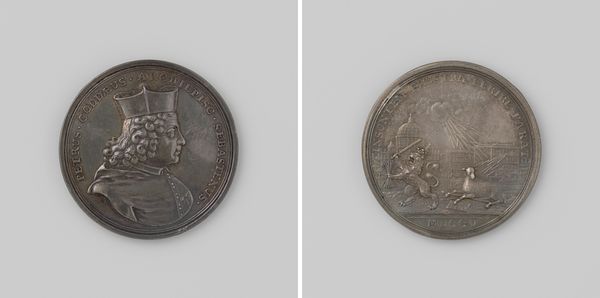
Marcello Malpighi, professor in de filosofie en de geneeskunde te Bologna before 1738
0:00
0:00
metal, relief, sculpture
#
portrait
#
baroque
#
metal
#
sculpture
#
relief
#
sculpture
Dimensions: diameter 3.6 cm, weight 23.26 gr
Copyright: Rijks Museum: Open Domain
Curator: The relief we’re observing commemorates Marcello Malpighi, a prominent 17th-century professor of philosophy and medicine in Bologna. Ferdinand de Saint Urbain rendered this work, probably in metal, before 1738. What catches your eye initially? Editor: The symmetry—or the deliberate lack thereof—is striking. On one side we have this stern profile portrait and on the other is a relaxed female figure that appears to be reclining, possibly symbolizing philosophy. The textures also feel intentional, contrasting the smoothness of the man’s face with the intricately detailed drapery. Curator: Yes, Malpighi's direct gaze embodies the intellectual rigor valued in Baroque portraiture. But look at the placement and choice of the medium, metal was specifically chosen to ensure its endurance. Editor: And note the careful balance! The composition directs the eye circularly, emphasizing the Latin inscriptions surrounding the images. The portrait side seems more rigid and orderly compared to the more allegorical reverse. Curator: The political and social contexts are subtly inscribed into these designs; such commemorative medals became a medium to broadcast achievement, contributing significantly to a person's and his family's prominence. Notice the second scene where philosophy is symbolized through a recumbent figure; here knowledge is displayed to inspire a future legacy. Editor: It is such a powerful gesture to freeze accomplishments, particularly through such durable means. The inscription on the reverse almost looks like an epitaph with the Roman numerals signifying the date. Curator: Right. Saint Urbain crafted these images intending them not just as tributes to Malpighi, but also testaments to how social recognition in academic and philosophical contributions translates into cultural longevity and, ultimately, societal influence. It reminds us that artistic creation does not occur outside cultural and societal contexts, but it has embedded the codes for how social contributions get archived in our shared visual world. Editor: Absolutely. By studying its visual structures and social contexts we enrich our perspectives on this remarkable historical piece, seeing how artistic choices amplify cultural ideals.
Comments
No comments
Be the first to comment and join the conversation on the ultimate creative platform.
